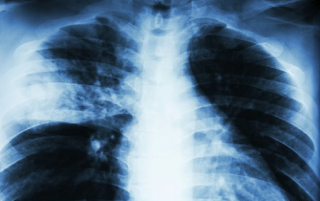About Pneumonia
Definition
Pneumonia is inflammation that occurs in the subbronchial area of the lungs (lungs), especially the alveoli (air pocket).Cause
The most common causes are microbial infections, which are bacteria or viruses, and rarely fungal infections. In addition to infectious pneumonia caused by microorganisms, non-infectious pneumonia may occur due to aspiration of foreign substances such as chemicals or vomiting, aspiration of gas, radiation treatment, and the like.Symptom
When pneumonia develops, the lungs become inflamed, resulting in disorders in the normal functioning of the lungs and systemic symptoms throughout the body.Pulmonary symptoms include coughing due to respiratory system irritation, sputum caused by discharge of inflammatory substances, and dyspnea caused by dysfunction of breathing. The phlegm can come out as a sticky, pus-like form, and sometimes comes with blood.
When inflammation invades the pleura surrounding the lungs, pain may occur when breathing, and symptoms of digestive tracts, such as nausea, vomiting, and diarrhea, may occur in addition to the respiratory tract. In addition, systemic diseases may occur throughout the body such as headache, fatigue, muscle pain, and joint pain. Fever or chills are usually reported by the systemic reaction of inflammation.
Diagnosis / Test
First of all, it can be suspected through medical history and medical examination, and chest x-ray imaging can be used to check and diagnose changes in lung shadow. However, if a clear shade is not found on the x-ray, a test such as chest computed tomography (CT) may be performed. It is not easy to identify the causative microorganism, but it is possible to diagnose causative bacteria by culturing causative bacteria with sputum, or through blood culture tests and urine antigen tests.Treatment
In the case of pneumonia, which is caused by microorganisms, treatment is performed according to the causative bacteria, and treatment is performed using antibiotics. In general, in the case of pneumonia occurring in the community, it is assumed to be bacterial pneumonia, and empirical antibiotic treatment is performed. Viral pneumonia, such as the flu, has an antiviral effect in the early stages of symptoms, but the effect of the antiviral agent is not clear after a period of time.If symptoms are mild and hospitalization is not necessary, hospitalization is not necessary, but inpatient treatment is recommended for children with immunity, elderly patients, and patients with severe illness. Treatment is usually sufficient for 10-14 days, unless there is no complication or pneumonia caused by resistant (drug-reducing phenomena due to repeated doses). If you are severe enough to be unable to breathe on your own, you should receive mechanical ventilation treatment in the intensive care unit.
Progress / Complication
It has a wide variety of course, and the course varies according to the basic patient's health condition, and the causative agent of pneumonia. As pneumonia progresses, septicemia or shock may occur, and partial complications of the lungs may include empyema, pulmonary abscess, and acute respiratory distress syndrome. In severe cases, death can occur.Prevention method
There is a vaccine to prevent pneumonia caused by the flu or pneumococcus. The pneumococcal vaccine does not completely protect pneumonia, but it is effective in reducing severe pneumococcal infections.Thank you for visiting my blog!
